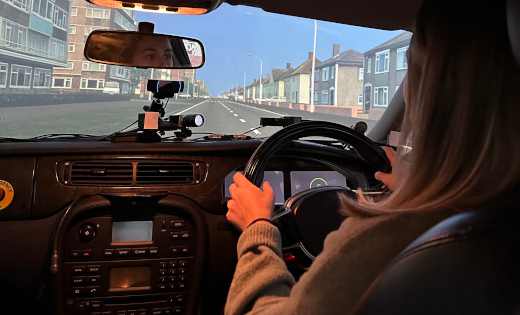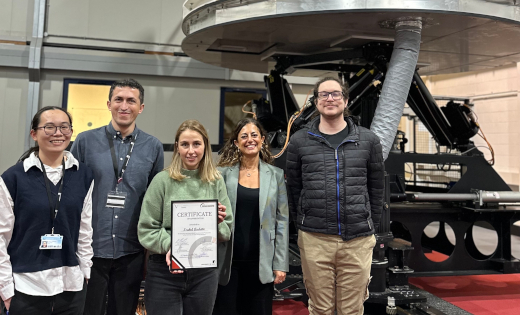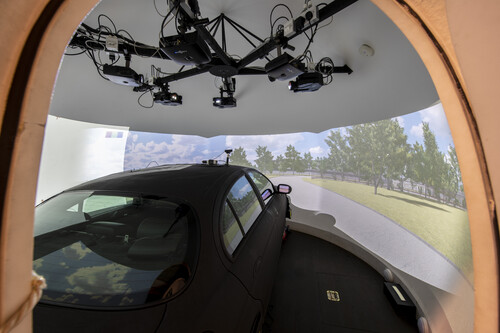Simulator Refurbishment Begins
Cutting-edge research equipment is receiving an upgrade 18 years after it first came into service at the University.

Time has been called on the current generation of our advanced driving simulator in Virtuocity – a unique programme for city simulation and co-design – with the retirement of the much-loved Jaguar S-Type interface vehicle.
Launched in 2006, the University of Leeds Driving Simulator (UoLDS) remains one of the most technically advanced systems of its kind in use within a research environment anywhere in the world today, and the leading example in the UK.
During its lifetime, the simulator has supported more than 30 significant UK and EU-funded projects totalling more than £15 million. Further laboratories have been added to create Virtuocity, including a motion-base-equipped Truck Simulator and the UK’s most advanced cave-based pedestrian simulator, together with an array of Virtual Reality headset and motion-capture technology. This state-of-the-art equipment enables researchers to simulate different environments for a range of road users, ensuring its services are always in high demand.
Pete Woodthorpe, Virtuocity Programme Manager, said “2023 was an incredibly busy year for UoLDS projects, with about 350 participants attending eight different experiments with us, operating on more than 125 days throughout the year – a significant increase on usage from pre-pandemic levels.”
 Yee Thung Lee, Dr Ibrahim Ozturk, Isabel Audette, Professor Natasha Merat and Dr Rafael Goncalves following the final experiment using the old simulator
Yee Thung Lee, Dr Ibrahim Ozturk, Isabel Audette, Professor Natasha Merat and Dr Rafael Goncalves following the final experiment using the old simulator
Honour
Virtuocity recently welcomed the last participant for the Jaguar’s final experiment. The third study of the Engineering and Physical Sciences Research Council-funded HAROLD project (HAzards, ROad Lighting and Driving) saw participants interacting with pedestrians and other road users in both day and night-time settings to investigate how lighting can be used to enhance safety on main roads. The study is also investigating how drivers’ hazard perception is affected by automated driving systems.
Isabel Audette had the honour of being the final study participant, and was presented with a token of appreciation by the HAROLD project team – Professor Natasha Merat, Dr Ibrahim Ozturk and PhD student Yee Thung Lee, together with her supervisor Dr Rafael Goncalves.
Operational activities on the simulator concluded with an internal open house event to allow University colleagues an opportunity to drive the simulator in its current guise for the last time. The UoLDS will now enter a period of refurbishment, with the next studies planned for late spring. Virtuocity’s other labs will remain fully operational throughout this period.
Latest developments
Professor Natasha Merat, Chair in Human Factors of Transport Systems, leads research at Virtuocity. She said: “In the past 18 years, the task of driving the road environment – and vehicles themselves – has changed considerably. We’re excited this refurbishment, which includes the integration of an all-new interface vehicle, will allow Virtuocity and the wider University to maintain our relevance and world-leading position as the world moves to connected and autonomous vehicles.”

Further open house events are planned to give colleagues the opportunity to test the driving simulator when the re-commissioning is complete. Watch this space for further news!
Contact Natasha at n.merat@its.leeds.ac.uk or Pete at p.t.woodthorpe@leeds.ac.uk for further information.
Note: This article is a repost of a recent University of Leeds For Staff website article published on 14th February 2024.
